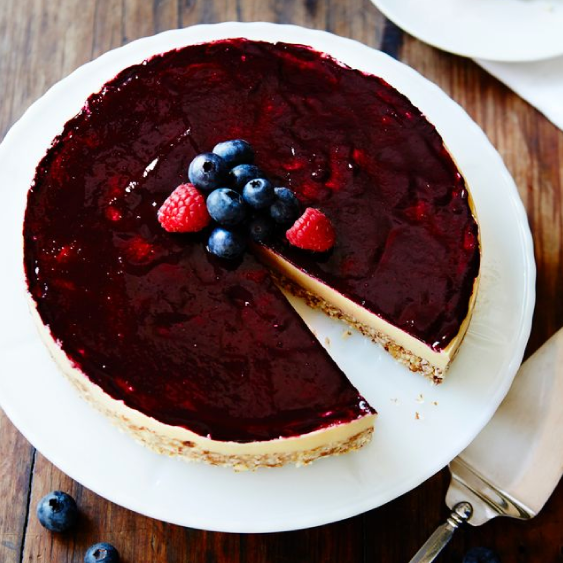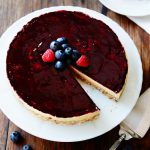Inflammation is a word that gets a lot of airtime these days – and for good reason.
While you might think of inflammation as the swelling that happens when you twist an ankle, or when acne is red and inflamed, these are localised acute inflammatory responses and are generally expected from the immune system in these situations.
Chronic systemic inflammation is mostly silent, however, which means we don’t see it on the outside and may not be aware it is happening. This is problematic because the inflammation persists over time, rather than being an acute reaction, and causes damage. It has been linked with numerous chronic diseases as well as degeneration and ageing. And while we can’t prevent ageing, we can absolutely influence how rapidly this occurs from the inside out.
What we eat plays an important role in the body’s levels of inflammation. This means that how you choose to nourish your body can either promote or decrease inflammation – let that empower you. Each and every time you eat, you have an opportunity to choose foods with anti-inflammatory effects. Yet please know that this doesn’t mean you need to, or should, try to be ‘perfect’ – there is still room to enjoy some less nutritious foods that you love as part of an overall nourishing way of eating. This is part of a healthy relationship with food, and it’s important to remember that other factors, such as stress, can influence inflammation as well.
When it comes to lowering inflammation, it’s really about your overall eating pattern, rather than a single food or nutrient. A way of eating that is based on whole, real foods, particularly plenty of colourful fruits and vegetables, and that minimises highly processed foods and drinks is very beneficial. So, introducing just one food that has anti-inflammatory properties won’t overcome an overall poor-quality way of eating – although it is certainly a step in the right direction. Do your best to eat mostly eat food (real food), not junk.
Change truly can begin with one small swap or decision. One step in the right direction can give us the confidence and momentum to take another, and another, and over time this can really add up. So, with that in mind, here are five anti-inflammatory foods to consider adding in regularly.
1. Oily fish
Oily fish are the main food sources of long-chain omega-3 fatty acids, which have anti-inflammatory actions. While the body can convert some of the fatty acids in certain plant foods (such as flaxseeds and chia seeds) into these long-chain omega-3 fatty acids, this conversion is limited so consuming them directly from oily fish can be highly beneficial (if you consume fish). Some examples of oily fish include wild salmon, mackerel and sardines.
2. Turmeric
Turmeric, and a key bioactive substance that it contains called curcumin, is well known for its potent anti-inflammatory properties. Add it to curries, soups, dhal, or try a turmeric latte. Turmeric can be purchased fresh (you can usually find it near fresh ginger and garlic in a supermarket produce section) or as a dried powder. Ginger also has some fantastic anti-inflammatory properties, so if turmeric doesn’t appeal you might like to try including this instead.
3. Berries
Berries are rich in various nutrients and other beneficial substances, such as anthocyanins, with anti-inflammatory actions. If you can, opt for a variety of different coloured berries—including blue, purple, and red—as they will contain different types and amounts of these beneficial substances. Buying a frozen pack of mixed berries (ideally organic) can be a cost-effective way of including a variety of types. I especially love blackcurrants as they are particularly rich in anthocyanins, a key reason why I included them in my Bio Blends Organic Daily Greens and Reds powder.
4. Leafy greens
Not only are leafy greens rich in a variety of vitamins and minerals, they are also packed full of other beneficial substances that have antioxidant and anti-inflammatory effects. Think spinach, rocket, kale, broccoli, cabbage, silverbeet, and more. Fresh herbs like parsley are also wonderful—plus, they can add so much flavour to your meals.
5. Extra virgin olive oil (EVOO)
Swap vegetable and seed oils for a good quality extra virgin olive oil (EVOO). EVOO is rich in polyphenols—natural substances from the olives that have potent antioxidant and anti-inflammatory actions. EVOO is great for making dressings or for drizzling on salad and vegetables—and adding this will actually help your body to absorb more of the nutrients from the vegetables. In general, good quality EVOO can also be used for most home cooking as the high levels of antioxidants in the oil protect it from damage when heated. There are usually different options available with varying flavour intensities, so you may like to find one that suits your taste preferences.









